#lacewing larva
Explore tagged Tumblr posts
Note


sorry for the photo quality- what kind of buggy is this? I had to sorta lift up the mess on its back to even see the friend! found around Binghamton, NY
Ohhh peeking at him!! It's a debris-carrying lacewing larva :)
116 notes
·
View notes
Text


A Trashbug, aka Green Lacewing larva (Mallada signatus).
#nature#my photography#backyard nature#lacewing larva#nature photography#green lacewing#wildlife photography#insect larvae#woodlot
9 notes
·
View notes
Text
Giant Antlions (Palpares immensus): these enormous antlions have been known to attack geckos and other small reptiles
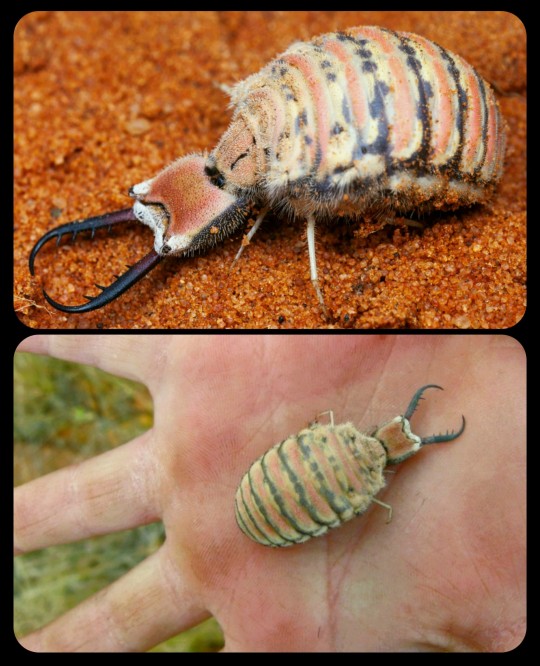
The images above depict the larval stage of Palpares immensus, which is one of the largest antlion species in the world.
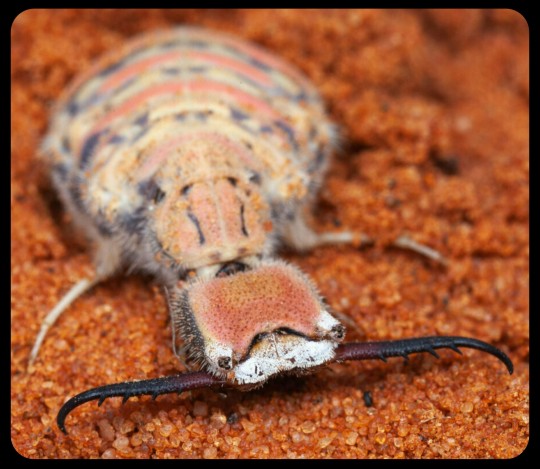
This article provides more information about the unusual behavior of this species:
The larvae live freely in sand and are ambush hunters. They are voracious predators and feed mainly on other arthropods, but have been known to attack geckos and, in one case a small adder. They are unable to feed on these reptiles and usually die as a result of not being able to extract their jaws from the vertebrate prey.
These antlions can be found in sandy, arid environments throughout southern Africa.
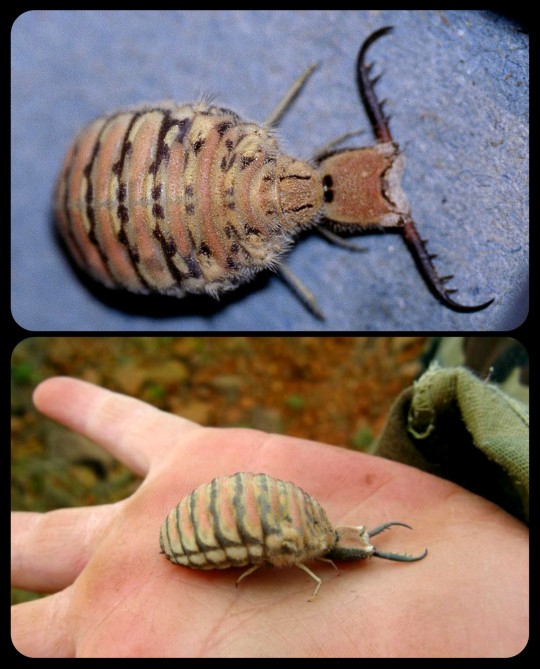
The adult form of Palpares immensus is also depicted in the images below:
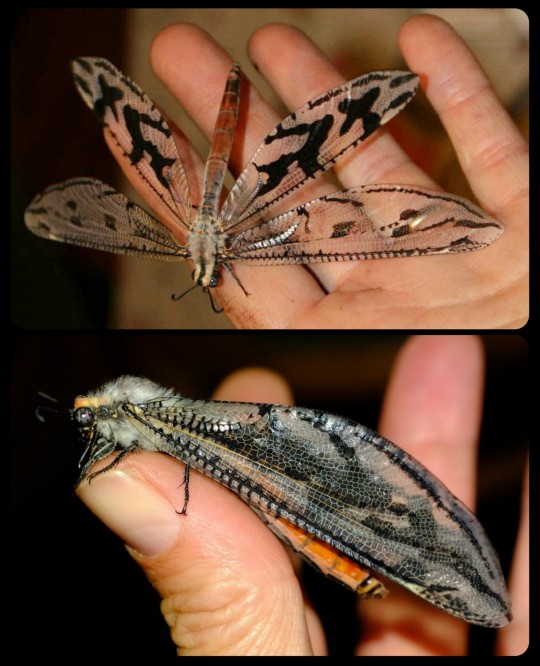
Sources & More Info:
Biodiversity and Development Institute: Palpares immensus
Global Biodiversity Information Facility: P. immensus
Animal Life: Giant Antlion Larva
What's That Bug?: Uncovering Antlion Habitats
#entomology#neuroptera#arthropods#giant antlion#palpares immensus#antlions#baby graboids#larvae#insects#bugs#owlflies#lacewings#animal facts#nature is weird#and also terrifying
2K notes
·
View notes
Text

#insect#lacewing#larva#macro#photographers on tumblr#textless#amadee ricketts#flower#yellow#perky sue#desert marigold#arizona#summer#august#tiny killing machine#bitey and smitey
66 notes
·
View notes
Text
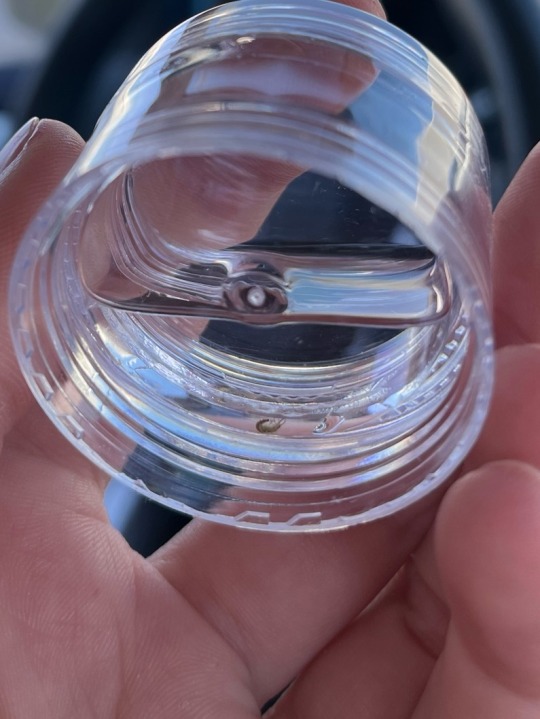
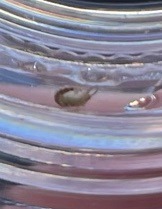
I work at Walmart and this aphidlion larva surprise bit the shit out of me out of nowhere he will live forever in infamy and in an alcohol specimen tube
RIP brave warrior
#insects#bugs#cute bugs#vegetables#ouch#working#work#funny#entomology#larva#lacewing#aphid lion#aphidlion#tiny#micro
8 notes
·
View notes
Text
Anyways when we finally decide we're sick of tumblrs bullshit can we all move to iNaturalist as the next big social media. [Holding hand out] do you want to look at creatures with me.
19 notes
·
View notes
Text




Eoic ohrogodump
#chickens#fatass cat#photo dump#the smiths#dirty ass bug#lacewing larvae#bugz#bugs#bug#insect#insects
5 notes
·
View notes
Text
lacewing larvae started crawlin on me
2 notes
·
View notes
Note





No ids needed [I have no idea what the third one is, but I know it's too small to id, lol], just some fun findings from my grandpa's backyard!
Third one is a lil lacewing larva :) All very cute!
114 notes
·
View notes
Text



The Emerald Jumping Spider (Paraphidippus aurantius) examined this Trash Bug (Family... Chrysopidae) but found it non-appetizing...
#nature#my photography#jumping spider#nature photography#lacewing larva#wildlife photography#green lacewing#spider#backyard nature#arachnids#chicken coop#insect
10 notes
·
View notes
Text
The Junk Bug and Me
I have looked at these photos of the Junk Bug many times. I clearly remember the afternoon I saw the tiny fluffy mess walking along the deck railing. I was so mesmerized by it that I did not think to take a picture for quite a while. Junk Bug/ Green Lacewing Larva The load it carried was many times bigger than its body underneath. The junk pile is the Green Lacewing Larva’s camouflage. It is a…
0 notes
Text
Vida's Sheep Jumping Spider: researchers believe that these tiny spiders developed their "woolly" appearance as a way to mimic lacewing larvae or scale insects

The scientific name for this species is Oviballus vidae, but it has also been referred to as the "sheepy jumping spider" or "Vida's jumping spider." It was discovered in 2015, and first described (in a formal context) back in 2020.

As this article (PDF) describes:
Recently, two new salticids, R. legitima and Oviballus vidae were described from South Africa, and suggested to be mimics of either scale insects (Hemiptera: Coccoidea) or lacewing larvae (Neuroptera: Chrysopidae), due to their white colouration and the presence of peculiar tufts of white setae on the body.

The possibility of [scale insects] being the model is supported by Oviballus vidae being regularly collected from plants with woolly scales, although the movements of O. vidae quite closely resemble those of chrysopid larvae.
In fact, a fourth species of possible scale mimic, a new Rhene species, was recently discovered in a collection of salticids from southern Mozambique, indicating that this phenomenon may be more widespread than has previously been known or even suspected.
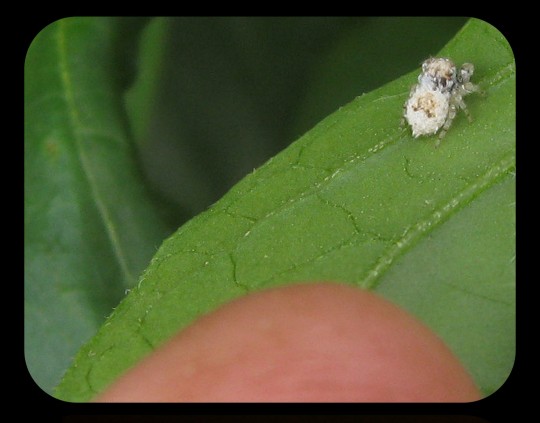
O. vidae was named after Vida van der Walt, the photographer who captured some of the first images of these spiders back in 2015, just after the species was discovered by Dr. Galina Azarkina. Vida van der Walt also took the photographs that appear in this post.
Sources & More Info:
Arthropoda Selecta (scientific journal): Rediscovery and Redescription of Rhene cooperi, another possible mimic of scale insects (PDF)
Spider Club of South Africa: Two New Species Named After SA Photographer (PDF, with the relevant info on page 5)
Field Guide to the Spiders of South Africa: Section on Vida's Sheep Jumping Spider
#arachnology#jumping spider#oviballus vidae#mimicry#cute bugs#animal facts#lacewing larvae#scale insects#south africa#wildlife#cute spider#sheep jumping spider#arthropods#cw spiders#but it's a really fluffy spider
436 notes
·
View notes
Text

#insect#lacewing#larva#aphid#photographers on tumblr#textless#amadee ricketts#arizona#macro#in the yard#green#yellow#summer#august#hunting
38 notes
·
View notes
Text


Tragic photographs taken mere MOMENTS before disaster.
#rb#(He bit me. It hurties.)#little creatures#lacewing#lacewing larvae#insect larvae#bugs#bugblr#bug photography
0 notes
Note
So I resently saw this post: https://www.tumblr.com/bowelfly/746535166780063744/try-it-i-fucking-dare-you
I have a feeling its a larva of some sorts... but I don't know of what. A fly? A beetle? A BUTTERFLY?
What does it eat?! How does it eat? Those pincers look unusable...
it's an antlion!

they DO eat ants, but the name is a bit of a misnomer- they really should have been called something like ant-pitfall. or maybe ant-sarlacc.

it'll make sense in a sec, promise
see, they do this:

most of the time, the pincers are the only part of them that actually sits above the ground! the rest of them is buried at the bottom of a steep pit they dig that ants and other small insects just kind of helplessly tumble into constantly in a very warner-brothers fashion.

*BLOING! BLOING! BLOING! YEEE-OOOOWTCH!*
so, yeah. they just spend all their larva time being an insect-centered horror movie monster, until they pupate.
and then they turn into these!

yeah. ant-lions are baby lacewings.
you really CAN'T make this shit up, and that's wonderful.
2K notes
·
View notes
Text
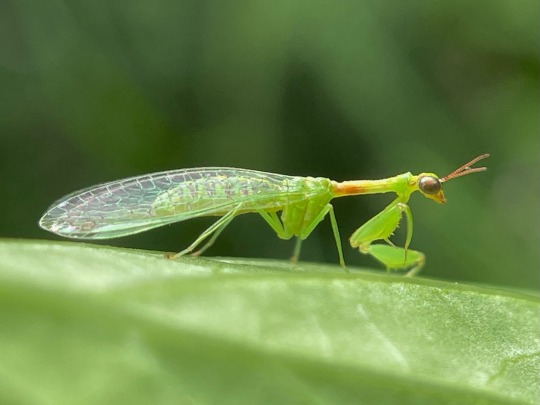
I found an insect last week I’ve wanted to see for as long as I’ve known they existed: a mantisfly! this one is Zeugomantispa minuta, the only species commonly observed where I live.
mantisflies (family Mantispidae) are named for their resemblance to mantises (order Mantodea) but themselves belong to the order Neuroptera, being related to lacewings and antlions. as adults, they closely resemble mantises, and live a similar lifestyle capturing prey with raptorial forelegs.
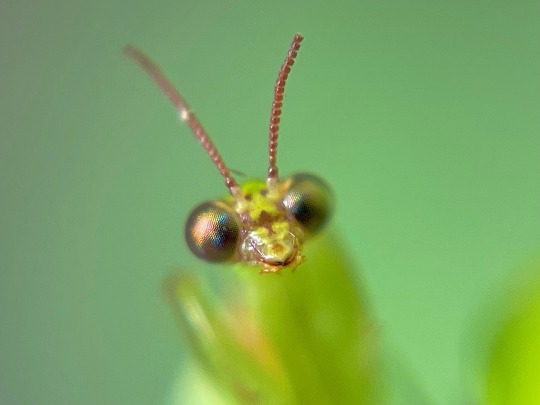
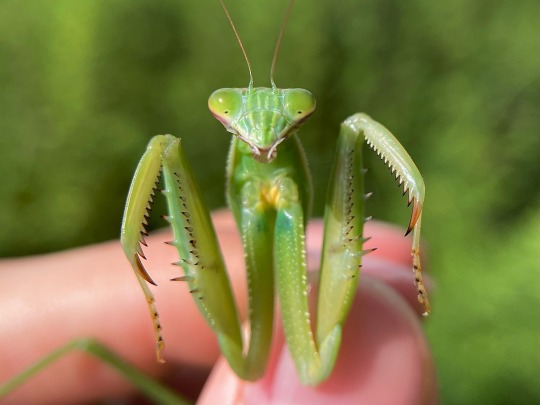
compared to this Chinese mantis (Tenodera sinensis), there are a few anatomical differences you might notice, but the biggest difference between the two is definitely their reproductive strategy.
mantises lay egg cases and develop from nymphs that resemble adults. being neuropterans, mantispid juvenile are larvae. but mantispid larvae, unlike their lacewing and antlion relatives, aren’t predators, they’re parasites! Zeugomantispa follow the strategy of starting as a leggy, highly active larva that on hatching immediately seeks out a spider egg sac to burrow into, growing into a plump grub quite different from its original appearance after feeding on the eggs. other mantispid larvae attach themselves to the adult spiders, and wait for their host to produce a sac; still others parasitize beetle or wasp larvae.
here’s a great photo of a mass of Z. minuta eggs hatching into their sac-seeking first instars!
1K notes
·
View notes